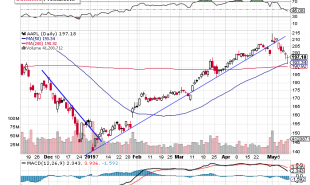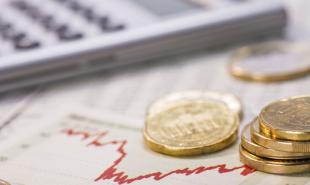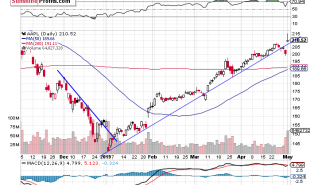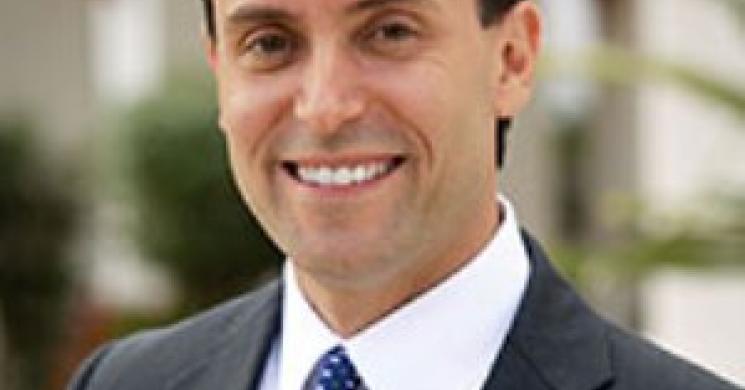
One of Marc Lichtenfeld’s proudest moments was getting to ring announce a world title boxing fight promoted by Mr. “Only in America” himself, Don King.
“He was one of my main clients for many years,” Marc tells me, adding that the boxing impresario “is always the smartest guy in the room. He’s three steps ahead of everyone else.”
You could say the same thing about Marc. As the Oxford Club’s chief income strategist—his day job when he’s not announcing boxing matches—Marc has spent much of his career educating investors on how best to stay “three steps ahead” of the market.
That means, among other things, taking a long-term investment approach and focusing on what he calls “Perpetual Dividend Raisers”—high-quality companies that consistently raise their payouts, preferably by a significant amount.
“The longer you can stay invested the better, as your dividends will grow and so should your capital,” he writes in his most recent book, You Don’t Have to Drive an Uber in Retirement.
Staying disciplined and sticking to this strategy go a long way in helping investors roll with whatever punches the market might throw.
Read on for more highlights from my recent conversation with Marc Lichtenfeld.
What inspired you to get into the financial world?
When I was in college, I had no interest in the stock market or finance. I wanted to be a sportscaster. It wasn’t until after I graduated that I started to invest for myself, and I became kind of obsessed with it. This was before the internet, so I would spend Saturday afternoons in the library researching companies and learning everything I could.
I eventually decided to make my hobby my profession, but nobody was interested in hiring a 20-something kid with no relevant experience.
I decided to visit a trading firm right down the street from my house that I knew was looking for a trading assistant. When I walked in and handed them my resume, I got the impression that I wouldn’t be getting a call back. I could see, though, that they desperately needed help entering orders and balancing their books, so I made the guy an offer he couldn’t refuse. I told him I’d work for free for a week, and if he wasn’t happy with what he saw, he could tell me no thanks. But by the end of the week, he told me to come back on Monday and that he’d start paying me.
That was my entry into the world of finance. From there, I had a couple of other positions, including as a sell-side analyst at Avalon Research Group, and then in 2007 I joined the Oxford Club, where I’ve been ever since.
Tell us about your start with Oxford Club and how the group has contributed to your professional development.
One of the things I admire most about the Oxford Club is its emphasis on individual investors. It really tries to teach investors how to grow their wealth the right way by managing risk and investing in quality companies.
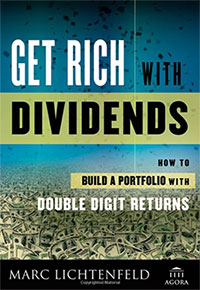
I began there by writing about biotech, which even now I believe is an industry of the future. A few years later, I spoke with Julia Guth, our CEO and publisher, about taking over the dividend newsletter, and in 2013 I launched my own dividend newsletter, the Oxford Income Letter.
My main focus since then has been on dividend growth companies. Around the same time that we launched the Oxford Income Letter, I wrote a book called Get Rich with Dividends. The strategy I describe is one that’s worked for many years. When you invest in companies that are raising their dividends 5 percent, 8 percent, 10 percent a year, you vastly improve your odds of generating some impressive returns and beating the market year after year. If you’re still in the wealth-building phase, it’s also important to reinvest the dividends because then the compounding machine just goes into overdrive.
This can really make a significant difference in the size of your portfolio and change your life down the road. It’s one of the many reasons why I started my kids investing in dividend growth companies. If they started as children, they could be in a very good position 30 years from now when they’re looking to buy a house or send their own kids to college.
Sticking with that strategy sometimes requires a lot of discipline.
I was actually having a conversation with my brother recently because he’s looking to put some money to work and wanted to get my thoughts. He’s a bit of a worrier, though, so I reminded him that if he’s going to invest, he really needs to be disciplined and not freak out if the market takes a downturn in, say, three years. What’s far more important is where the market will be 10 years from now. Historically, the market is up 10 years down the road—it’s very rare that it’s not—but you need to have the discipline to stay with it.
The important takeaway here is to know your tolerance for risk and adjust your investments accordingly. My brother’s very cautious, so he probably shouldn’t put every dollar in the market if he’s going to lose sleep over a correction and sell at the wrong time.
It’s easier for those who’ve seen the data and know that the market has historically been up in 10 years, even if we’re at the top of the business cycle. In Get Rich with Dividends, I talk about the only times when markets have been down over a 10-year period, and those are in the middle of the Great Depression and in 2008-2009 during the Great Recession. You would literally need to cash out in the middle of a historic downturn not to make money over 10 years, and that’s if you sold right at the bottom. If you had waited another year or two, you might have come out at least breaking even, if not better.
Who were your mentors early on?
My biggest mentor was David Hines. David was my research director at Avalon, which had the reputation of being the most contrarian research firm on Wall Street. We initiated ratings on stocks only if that rating was going to be contrarian. If we were bullish on energy and so was the rest of the Street, there was no reason for us to publish our research. Why would anyone listen to us versus Goldman Sachs or Morgan Stanley?
In any case, I thought I was contrarian—until I met David. Any time I came to him with my research, he would just poke so many holes in it. It made me double and triple-check that all my i’s were dotted and t’s were crossed before presenting an argument to him.
What book do you think every investor should read?
I would say The Richest Man in Babylon, by George Clason. It’s 70 or 80 pages, so you could read it in an afternoon. The book, which is about 100 years old now, is filled with great life lessons on money management and saving and investing. I would recommend it especially to someone who has a teenager or young adult in their life, and they want to impart some important lessons.
On the more technical side, I would recommend David Dreman’s Contrarian Investment Strategies.He’s considered to be the father of contrarian investing. The book is pretty data-rich, but if you like that kind of thing, it really makes a strong argument for contrarian investing.
In one of your recent presentations, which I attended, you explained that cash flow is more important than earnings. Can you elaborate on that?
There’s no doubt earnings are important. Stock prices tend to follow earnings over the longer term, but they can easily be doctored and manipulated. Let’s say a company records a sale of $1 million on December 30. Even if it hasn’t been paid yet, it can still include that sale as part of its revenue for the fiscal year, depending on the industry. The $1 million means nothing, then, in terms of its ability to pay bills and dividends and meet payroll.
Cash flow can tell a truer story because it excludes all the non-cash items and adjusts for accounts receivable. It represents only the cash that has come into a business during the year, and it gives you a better idea of a company’s ability to pay the bills. In the above example, cash flow would show you that the $1 million hasn’t come in yet. Also, if there’s fraud going on, oftentimes cash flow is where you’ll be able to detect it. If earnings are constantly going straight up and cash flow is not following it, this might raise some red flags.
Now, I want to caution, this doesn’t always mean fraud is taking place if earnings rise for a year or two and cash flow doesn’t follow. But if you see a trend of rising earnings but deteriorating cash flow, then you might want to start asking some questions.
So what’s your outlook for the rest of 2018?
We don’t try to time the market at the Oxford Club. Rather, we focus on trying to find great opportunities—stocks that are undervalued or that we expect to go up because of momentum or fundamentals—and manage risk.
Having said that, I don’t see any reason to expect a market correction at this point. The market has so far shrugged everything off—trade wars, outrageous presidential tweets, higher interest rates and more. It seems the market wants to keep going higher, so we’re going to continue to try to ride it higher, too.
-------------------------------------
All opinions expressed and data provided are subject to change without notice. Some of these opinions may not be appropriate to every investor. By clicking the link(s) above, you will be directed to a third-party website(s). U.S. Global Investors does not endorse all information supplied by this/these website(s) and is not responsible for its/their content.
There is no guarantee that the issuers of any securities will declare dividends in the future or that, if declared, will remain at current levels or increase over time.
Cash flow is the total amount of money being transferred into an out of a business, especially as affecting liquidity.
U.S. Global Investors, Inc. is an investment adviser registered with the Securities and Exchange Commission ("SEC"). This does not mean that we are sponsored, recommended, or approved by the SEC, or that our abilities or qualifications in any respect have been passed upon by the SEC or any officer of the SEC.
This commentary should not be considered a solicitation or offering of any investment product.
Certain materials in this commentary may contain dated information. The information provided was current at the time of publication.
Read more by Frank Holmes


